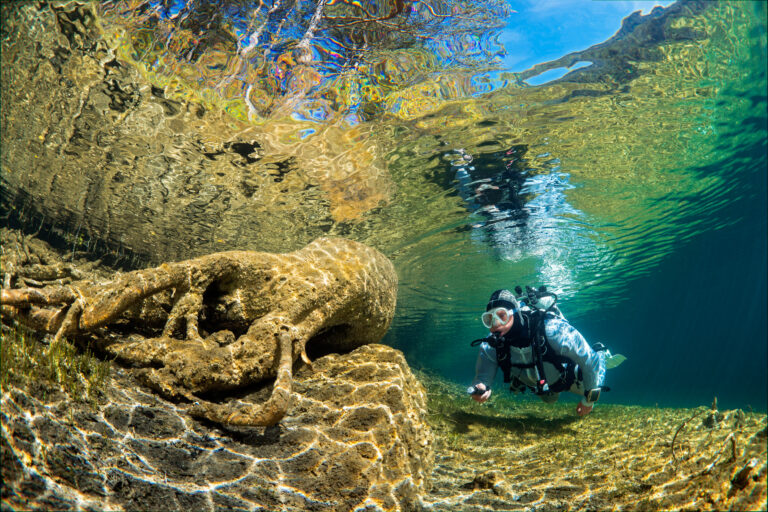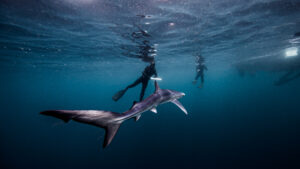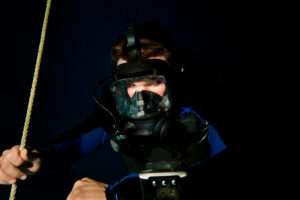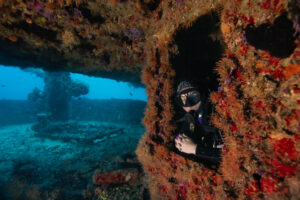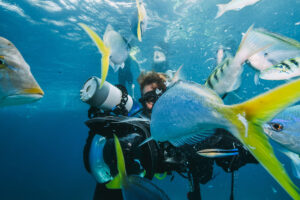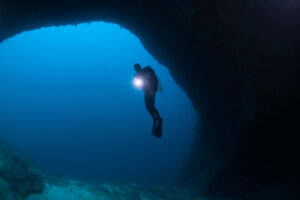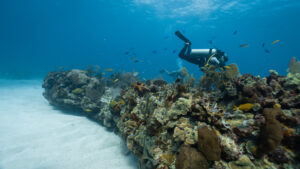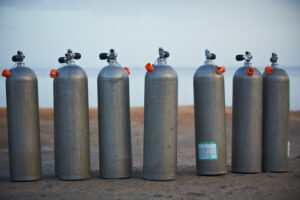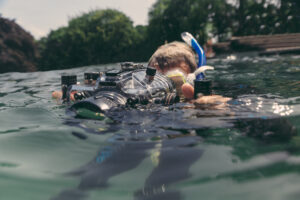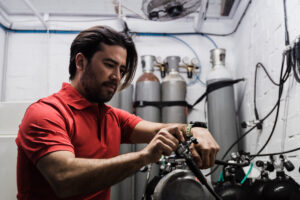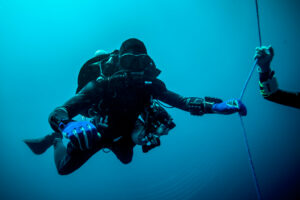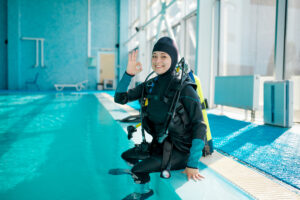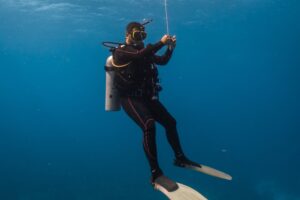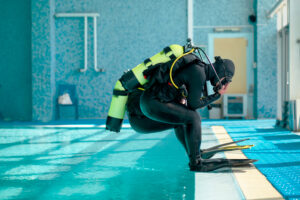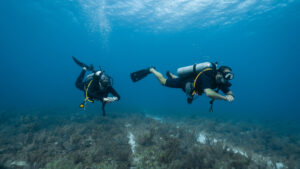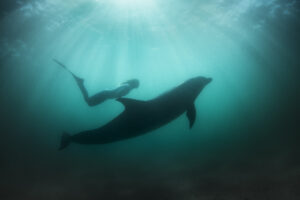What is Altitude Diving?
Altitude diving refers to the practice of scuba diving at locations where the water surface is at an altitude that requires modification of decompression schedules, typically more than about 300 meters (980 feet) above sea level.
Altitude diving presents unique challenges for divers, as the reduced atmospheric pressure at higher elevations affects both the gas laws governing scuba diving and the body’s ability to off-gas nitrogen. To safely participate in altitude diving, divers must understand the changes in dive planning, equipment, and physiology and adjust their practices accordingly.
History
The first recorded instance of altitude diving dates back to 1951, when American naval officers conducted a series of dives in a high-altitude lake in California. Since then, altitude diving has become increasingly popular among recreational divers, technical divers, and scientific researchers. The activity has advanced significantly over the years, with the development of specialized equipment, training, and decompression models tailored to the unique demands of diving at high altitudes.
Physics of Altitude Diving
The primary difference between altitude diving and diving at sea level lies in the reduced atmospheric pressure at higher elevations. This affects the pressure of the breathing gas and the partial pressures of gases dissolved in the body, which in turn impacts the decompression process. The primary concerns for altitude divers are:
Reduced ambient pressure
At altitude, the pressure of the air and water is lower than at sea level, which affects the rate at which nitrogen is absorbed and released by the body. This necessitates modified decompression schedules and adjustments to no-decompression limits to avoid decompression sickness (DCS).
Gas laws
The ideal gas law (PV=nRT) dictates that the volume of a gas at constant temperature is inversely proportional to the pressure. This means that, at altitude, a given volume of gas will expand more than at sea level, affecting buoyancy control and potentially causing overexpansion injuries.
Partial pressure of gases
The reduced atmospheric pressure at altitude also affects the partial pressures of gases in the breathing mix, leading to a lower partial pressure of oxygen and a higher partial pressure of nitrogen. This can cause hypoxia and increase the risk of DCS, respectively.
Decompression Schedules and Models
To account for the differences in gas absorption and release at altitude, divers must use modified decompression schedules or dive computers that incorporate altitude-specific algorithms. The most widely accepted altitude diving models are:
Cross Corrections
This method involves modifying sea-level decompression schedules using a correction factor based on the altitude of the dive site. The U.S. Navy and Bühlmann models are examples of decompression tables that use cross corrections for altitude diving.
Reduced Gradient Bubble Model (RGBM)
The RGBM, developed by Dr. Bruce Wienke, is a decompression model that incorporates both altitude and depth in its calculations. This model is used in many dive computers, including those from Suunto, Scubapro, and Mares.
Equipment and Techniques
Altitude diving requires some specific equipment and techniques to ensure safe and enjoyable dives:
Exposure protection
The colder temperatures often found at high-altitude dive sites necessitate the use of thicker wetsuits, drysuits, and additional thermal protection.
Buoyancy control
Due to the increased expansion of gas at altitude, buoyancy control can be more challenging. Divers may need to use additional weight or adjust their buoyancy compensator (BC) more frequently.
Dive computers
Divers should use dive computers with altitude-adjustable settings to ensure accurate decompression information. It is essential to calibrate the computer to the appropriate altitude before diving.
Ascent rates
Ascent rates should be slower at altitude to allow for adequate off-gassing of nitrogen and to reduce the risk of DCS. Divers should follow the recommended ascent rates provided by their dive computer or decompression table.
Pre-dive acclimatization
Divers should allow sufficient time to acclimate to the altitude before diving. This process can take several hours to a few days, depending on the individual and the elevation. Acclimatization helps the body adjust to the reduced oxygen levels and reduces the risk of altitude sickness, which can be exacerbated by diving.
Gas management
Due to the lower partial pressure of oxygen at altitude, divers may need to use enriched air nitrox (EAN) mixes with higher oxygen content to avoid hypoxia. It is crucial to ensure proper gas analysis and planning for adequate gas reserves.
Emergency procedures
Divers should be prepared for emergencies specific to altitude diving, such as hypoxia, DCS, and overexpansion injuries. Adequate training and familiarity with emergency procedures, including the use of oxygen, are essential.
Training and Certification
Many diving organizations offer specialized altitude diving courses, which provide divers with the knowledge and skills needed to safely plan and execute dives at high altitudes. The courses typically cover topics such as:
- The physics and physiology of altitude diving
- Decompression theory and altitude-specific dive planning
- Equipment considerations and adjustments
- Ascent rate and safety stop guidelines
- Emergency procedures and treatment for altitude-related issues
Upon completion of an altitude diving course, divers receive a certification card that serves as proof of their training and competency in this specialized area.
Key Takeaway
Altitude diving offers a unique and challenging experience for divers who wish to explore the underwater world at higher elevations. With proper training, equipment, and dive planning, divers can safely enjoy this exciting and rewarding pursuit. By understanding the specific challenges associated with altitude diving and taking the necessary precautions, divers can mitigate the risks and have a safe and memorable experience.

